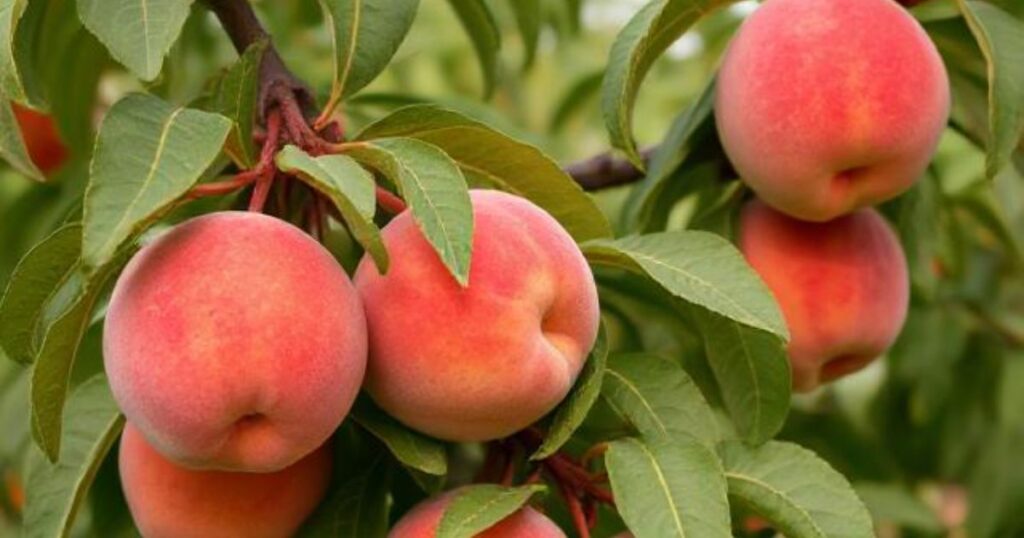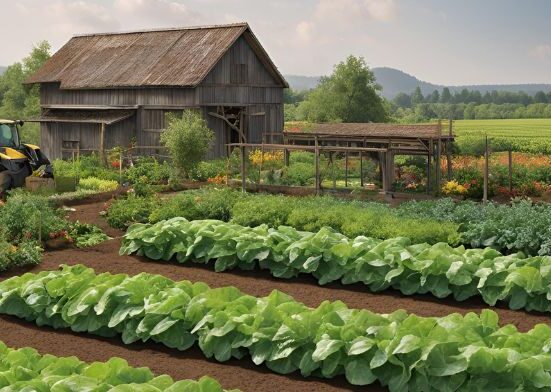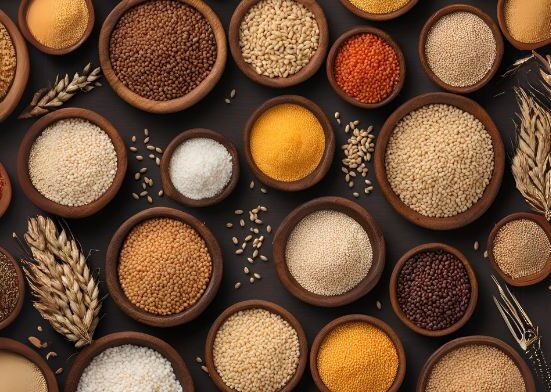Peaches are one of summer’s most beloved fruits—juicy, sweet, and bursting with flavor. Whether you enjoy them fresh off the tree, either combined into a smoothie or baked into a pie, peaches bring a delicious touch to countless dishes. But did you know there are many different types of peaches, each with its own unique taste, texture, and best use?
From the classic yellow peaches to the fragrant white varieties, and even the quirky donut (or Saturn) peach, each type offers something special.
Peaches are also categorized by how their flesh clings to the pit—either clingstone, freestone, or a mix of both.Being aware of the variations might assist you in selecting the perfect peach for your next recipe, whether you’re making jam, grilling fruit, or simply snacking.In this guide, we’ll explore the most popular types of peaches, how they differ, and the best ways to enjoy each one. You’ll also find tips on selecting ripe peaches, proper storage methods, and more. So whether you’re a longtime best peaches lover or just discovering their versatility, this guide will help you make the most of every juicy bite.
Understanding Peach Varieties
Peaches come in numerous varieties, each with distinct traits, including flavor, texture, color, and pit type. They are broadly categorized based on their pit (freestone vs. clingstone), flesh color (yellow vs. white), and intended use (fresh eating, canning, or cooking). Below, The Health Benefits of Peaches we delve into the primary types of peaches, their distinctive characteristics, and how to utilize them.
Freestone Peaches
Freestone peaches are distinguished by their pits, which readily separate from the flesh, making them ideal for fresh eating, baking, and slicing. These peaches are typically larger, juicier, and sweeter, with a perfect balance of tartness.
Characteristics: Firm yet juicy flesh, vibrant yellow or white flesh, and a pit that comes away cleanly.
Popular Varieties:
Elberta: One of the most famous freestone peaches, Elberta is large, sweet, and juicy with yellow flesh. It’s perfect for fresh eating, canning, and baking.
Redhaven: Known for its rich, sweet flavor and firm texture, Redhaven is a favorite for pies and cobblers.
O’Henry: This variety features deep orange flesh with a robust, sweet-tart flavor, making it ideal for grilling or fresh salads.
Best Uses: Enjoy fresh, slice for salads, bake in pies, cobblers, and tarts, or freeze for smoothies.
Growing Conditions: Freestone peaches thrive in warm climates (USDA zones 5–9) with well-drained soil and full sun. They require about 600–900 chilling hours (hours below 45°F) to set fruit.
Clingstone Peaches

Clingstone peaches have pits that adhere tightly to the flesh, making them less ideal for fresh eating but excellent for processing. These peach varieties red haven are often sweeter and softer, perfect for canning and preserves.
Characteristics: Soft, juicy flesh that clings to the pit, typically yellow-fleshed, with a sweet, intense flavor.
Popular Varieties:
Springcrest: An early-ripening clingstone with bright red skin and sweet, juicy flesh, great for jams.
Dixired: Known for its tangy-sweet flavor, this variety is often used in canning and as a sauce ingredient.
Coronet: A smaller clingstone peach with a rich flavor, ideal for preserves and baking.
Best Uses: Canning, making jams, jellies, sauces, or baking in dishes where the pit can be removed during processing.
Growing Conditions: Clingstones prefer similar conditions to freestone peaches but are often more cold-hardy, requiring 500–800 chilling hours.
Semi-Freestone Peaches
Semi-freestone peaches are a hybrid between freestone and clingstone, offering a pit that is moderately easy to remove when fully ripe. These peaches combine the best of both worlds, making them versatile for a wide range of culinary applications.
Characteristics: Juicy flesh with a pit that partially clings when unripe but separates more easily when ripe.
Popular Varieties:
Glohaven: A sweet, yellow-fleshed peach with a balanced flavor, great for fresh eating and baking.
Cresthaven: Known for its large size and sweet-tart flavor, this variety is excellent for both fresh and processed uses.
Best Uses: Fresh eating, baking, canning, or freezing.
Growing Conditions: Similar to freestone peaches, semi-freestone varieties need well-drained soil, full sun, and 600–800 chilling hours.
Yellow-Fleshed Peaches
Yellow-fleshed peach type of fruit are the most common type found in supermarkets, known for their classic peach flavor, which strikes a balance between sweetness and tartness. Their vibrant orange-yellow flesh is rich in beta-carotene, a precursor to vitamin A.
Characteristics: Bright yellow or orange flesh, firm texture, and a sweet-tart flavor profile.
Popular Varieties:
Redhaven: A versatile yellow-fleshed peach with a juicy texture, perfect for pies and fresh eating.
Elegant Lady: A large, sweet peach with firm flesh, How To Freeze Peaches: ideal for grilling or slicing into salads.
Suncrest: Renowned for its rich flavor and vibrant color, this variety is perfect for baking and canning.
Best Uses: Fresh eating, baking, grilling, or making sauces and chutneys.
Health Benefits: High in antioxidants like beta-carotene, which supports eye health and immunity.
White-Fleshed Peaches

White-fleshed peaches are prized for their delicate, sweet flavor and lower acidity compared to yellow-fleshed varieties. They are often described as having a floral or honey-like taste, making them a favorite for fresh eating.
Characteristics: Pale, creamy flesh with a sweeter, saturn peach less tart flavor and softer texture.
Popular Varieties:
Snow Beauty: A sweet, juicy white peach with a delicate flavor, perfect for fresh eating.
White Lady: Renowned for its low acidity and floral notes, this variety is particularly well-suited for desserts.
Babcock: A classic white-fleshed peach with a sweet, mild flavor, ideal for salads and smoothies.
Best Uses: Enjoy fresh, add to fruit salads, or use in light desserts like sorbets and parfaits.
Health Benefits: Rich in antioxidants like chlorogenic acid, which may reduce inflammation.
Nectarine-Like Peaches (Donut or Flat Peaches)
Donut sweet peach, also known as flat peaches or Saturn peaches, are a unique type characterized by their flattened shape and small pit. They are closely related to nectarines, with smooth skin and sweet, juicy flesh.
Characteristics: Flat, disc-like shape, smooth or slightly fuzzy skin, and sweet, tender flesh.
Popular Varieties:
Stark Saturn: A popular donut peach with white flesh and a sweet, honey-like flavor.
Galaxy: A yellow-fleshed flat peach with a rich, juicy taste, great for fresh eating.
BuenOs: A newer variety with firm flesh and a sweet-tart flavor, ideal for grilling.
Best Uses: Fresh eating, slicing for salads, Sweet Potatoes and Irish Potatoes or grilling for a caramelized flavor.
Growing Conditions: Donut peaches require 400–600 chilling hours and thrive in warm, sunny climates.
Heirloom Peaches
Heirloom peach tree varieties are older, non-hybridized varieties that have been passed down through generations. They often have unique flavors and textures but may be less uniform in size and appearance compared to modern cultivars.
Characteristics: Diverse flavors ranging from sweet to tangy, often with softer flesh and intense aroma.
Popular Varieties:
Indian Blood: A red-fleshed heirloom with a tart, complex flavor, used for preserves and baking.
Belle of Georgia: A white-fleshed heirloom with a sweet, juicy flavor, great for fresh eating.
Oldmixon Free: A freestone heirloom with yellow flesh and a rich, sweet taste.
Best Uses: Fresh eating, canning, or making artisanal jams and desserts.
Growing Conditions: Heirlooms vary widely in their chilling requirements, but generally require 600–1000 chilling hours.
Dwarf Peach Varieties
Dwarf peach trees are bred for smaller spaces, such as patios or small gardens, but still produce full-sized fruit. These varieties are ideal for home gardeners with limited space.
Characteristics: Compact trees (4–6 feet tall) with standard-sized, flavorful peaches.
Popular Varieties:
Bonanza: A dwarf freestone peach with sweet, yellow flesh, perfect for fresh eating.
Pix Zee: A dwarf variety with large, flavorful peaches, ideal for containers.
Honey Babe: A sweet, How To Blanch Peaches white-fleshed dwarf peach great for small gardens.
Best Uses: Fresh eating, baking, or growing in containers for home gardens.
Growing Conditions: Require 400–600 chilling hours and well-drained soil in full sun.
Choosing the Right Peach for Your Needs
When selecting a peach variety, consider your intended use:
Fresh Eating: Opt for freestone or white-fleshed peaches, such as Redhaven or Snow Beauty, for their juicy texture and sweet flavor.
Baking and Cooking: Yellow-fleshed freestone or semi-freestone varieties, such as Elberta or Glohaven, hold up well in pies and cobblers.
Canning and Preserves: Clingstone peaches, such as Springcrest or Dixired, are ideal for jams and sauces due to their inherent sweetness.
Grilling: Firm varieties like O’Henry or BuenOs maintain their shape when grilled.
Gardening: Select dwarf or heirloom varieties that suit your climate and space constraints.
Growing Peaches: Tips for Success
peach victoria are relatively easy to grow, but they require specific conditions to thrive:
Climate: Peaches require warm summers and a particular number of chilling hours (varying by variety) to produce fruit. Most do well in USDA zones 5–9.
Soil: Well-drained, slightly acidic soil (pH 6.0–6.5) is ideal.
Sunlight: Full sun (6–8 hours daily) is essential for fruit development.
Pruning: Regular pruning in late winter promotes healthy growth and higher yields.
Pest Management: Be vigilant for pests such as peach tree borers and diseases like peach leaf curl. Use organic or chemical controls as needed.
Culinary Uses of Peaches
Peaches are incredibly versatile in the kitchen. Here are some ideas to inspire you:
Fresh Peach Salad: Combine sliced peaches with arugula, feta, and walnuts for a refreshing summer dish.
Peach Smoothie: Blend peaches with yogurt and banana, and add a little honey for a healthy breakfast.
Grilled Peaches: Halve peaches, grill until caramelized, and serve with ice cream or yogurt.
Peach Salsa: Mix diced peaches with tomatoes, cilantro, How To Grow Zinnia Flowers and lime juice for a vibrant salsa.
Peach Pie: Use freestone peaches, such as Elberta, for a classic, juicy pie.
Storage Tips
- Store unripe peaches at room temperature until soft.
- Refrigerate ripe peaches for up to a week.
- Freeze peeled, sliced peaches for up to 6 months for smoothies or baking.
Health Benefits of Peaches

All peach varieties offer health benefits, including:
Antioxidants: Rich in chlorogenic acid, quercetin, and beta-carotene, which combat oxidative stress.
Fiber: Supports digestive health and promotes satiety.
Vitamins: High in vitamins C and A, which boost immunity and skin health.
Low Calories: A medium peach contains approximately 58 calories, making it an excellent snack for weight control.
Potential Considerations
- Allergies: Oral allergy syndrome can affect some people. Due to sensitivities to pollen or peach fuzz.
- Pesticides: Choose organic peaches to avoid pesticide residues, or wash thoroughly.
- Ripeness: Unripe peaches can be complex and less flavorful, so allow them to ripen at room temperature.
Conclusion
From sweet white peaches to tangy yellow ones, and from easy-to-eat freestones to juicy clingstones, peaches come in more varieties than many people realize. Each type offers something unique—whether it’s a firm texture perfect for baking, a soft bite ideal for fresh snacking, or an extra-sweet flavor for desserts and smoothies. Understanding the differences between peach types can help you choose the best one for your needs, whether you’re cooking, canning, or just craving something naturally sweet.Exploring different peach varieties also adds excitement to your seasonal eating.
Visit local farmers’ markets during peak summer months to discover regional or heirloom peaches that you might not find in grocery stores. Don’t be afraid to experiment—try a white peach salsa, grill some yellow peaches for a savory dish, or snack on a chilled donut peach on a hot afternoon.peaches different types aren’t just delicious—they’re incredibly versatile, full of nutrients, and easy to enjoy in many forms. So the next time you’re at the store or market, take a moment to try a new variety. With a bit of knowledge, you’ll never look at peaches the same way again.
FAQ
What distinguishes freestone peaches from clingstone peaches?
The flesh of clingstone peaches adheres firmly to the pit; however, freestone peaches separate easily. Freestones are great for fresh eating, while clingstones are ideal for canning and cooking.
Are white peaches sweeter than yellow peaches?
Yes, white peaches are generally sweeter and less acidic than yellow peaches. They are ideal for fresh food because of their subtle flavor. Eating and desserts, while yellow peaches have a tangy edge that suits them well for baking and cooking.
What are donut peaches?
Donut peaches, also called Saturn peaches, are flat-shaped and extra sweet with low acidity. They’re easy to eat, have a small pit, and are loved for their juicy, tender texture, making them perfect for snacking.
Can I use any peach for baking?
While most peaches can be baked, yellow freestone peaches are typically best suited for pies and cobblers due to their firm texture and harmonious blend of sour and sweet flavors.
How can I tell if a peach is ripe?
The aroma of a ripe peach is pleasant. Slight softness to the touch, and vibrant color. Avoid peaches with green patches or those that feel overly hard.







